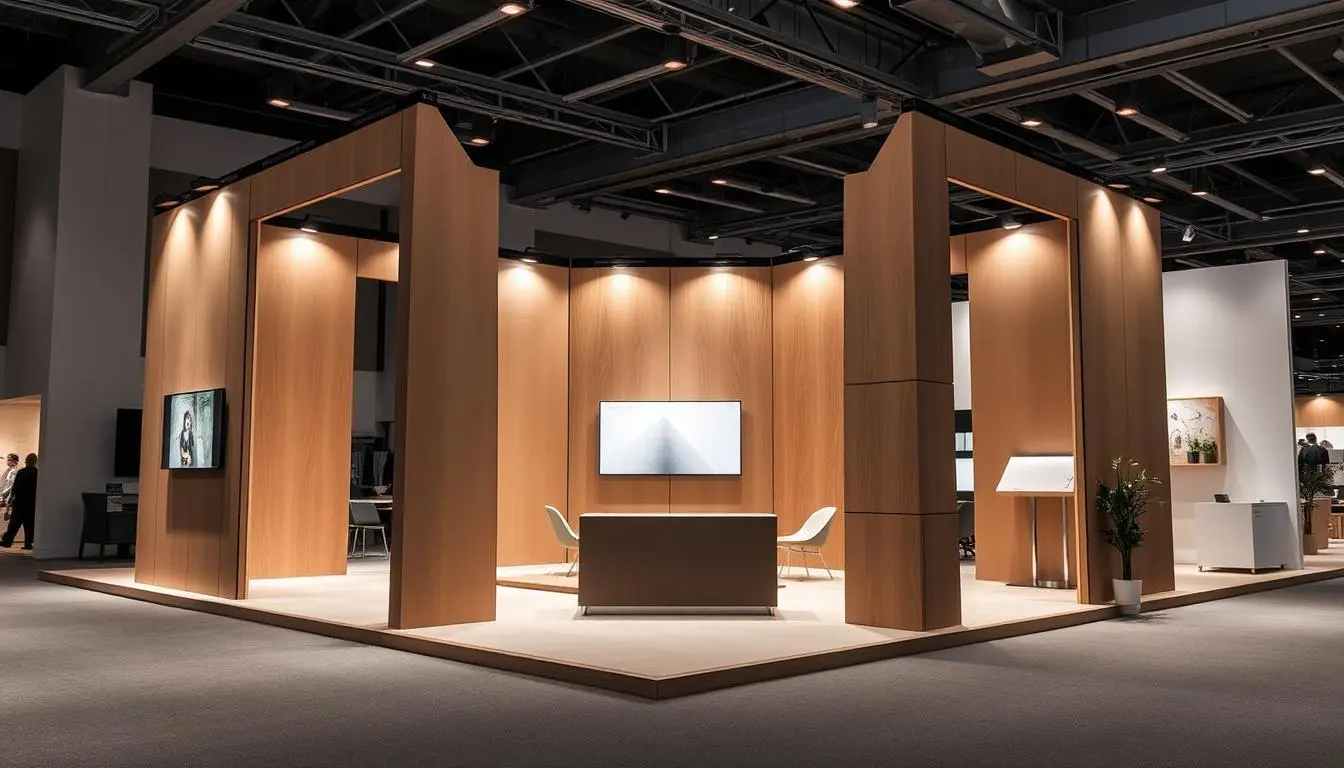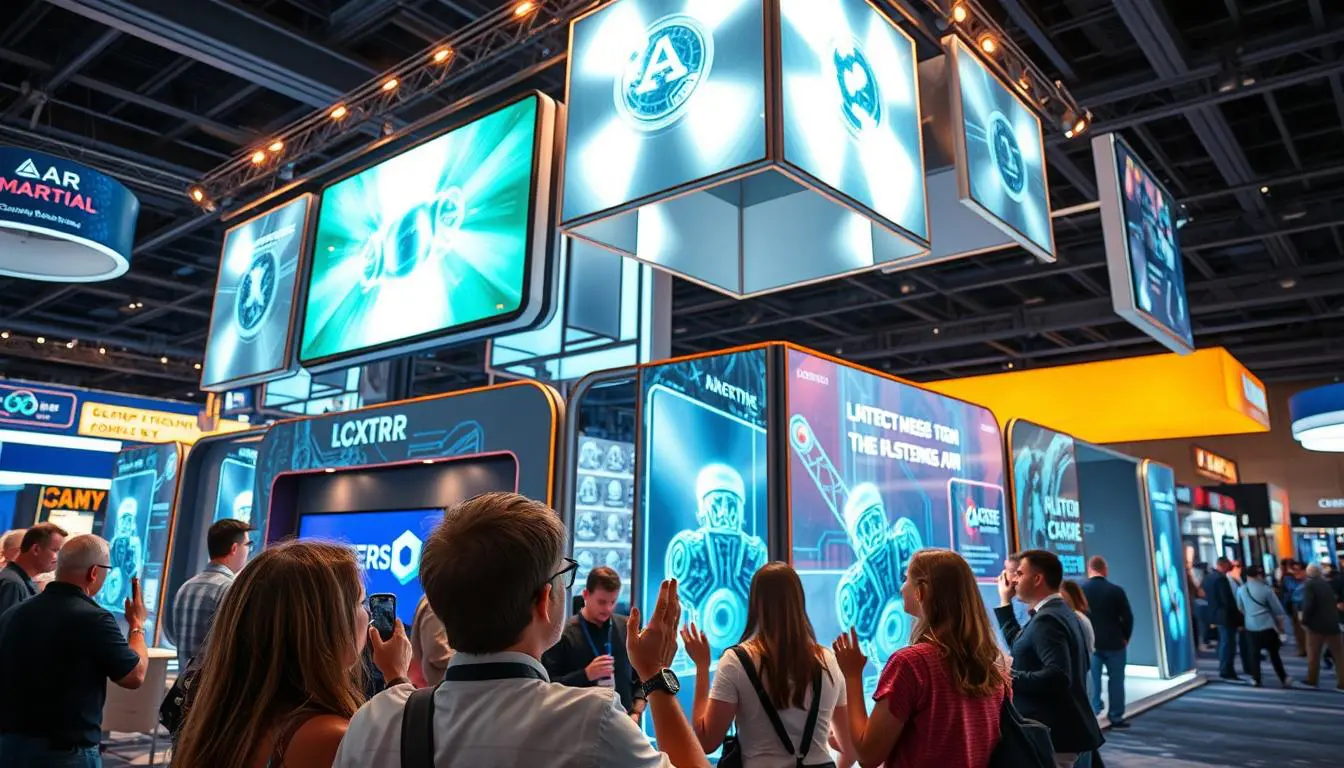Choosing the right trade show booth can make or break your event success. I’ve spent over two decades helping companies find the perfect exhibit solution, and I’ve seen firsthand how the right booth type transforms a brand’s presence on the show floor.
At Xibeo, we work with everyone from startups attending their first local expo to established companies dominating major industry events. The question I hear most often is simple: “Which booth type is right for us?”
Let me walk you through your options.
Understanding Trade Show Booth Categories
Before diving into specific booth types, you need to understand what influences your decision. Your booth space allocation matters. A 10×10 inline space requires a different approach than a 20×20 island booth.
Your budget plays a huge role. But so does how often you exhibit, what you’re trying to accomplish, and whether you have storage space between shows.
Think about these factors:
Space configuration. Inline booths have neighbors on three sides. Island booths stand alone with access from all four sides. Peninsula booths have exposure on three sides.
Event frequency. Attending one show per year? Your needs differ completely from a company hitting ten events annually.
Brand positioning. Are you an industry leader or an emerging player? Your booth should reflect that reality.
Logistical capacity. Can your team handle complex setup, or do you need something simpler?
Portable Trade Show Booths: Maximum Flexibility
Portable exhibits are exactly what they sound like. These displays pack into shipping cases that one or two people can transport and set up without special tools or extensive training.
What Qualifies as Portable?
Portable booths typically include tabletop displays, banner stands, pop-up backdrops, and lightweight modular systems. Most fit into a 10×10 space or smaller. The entire booth often weighs less than 100 pounds when packed.
You can ship these displays via standard ground service. No freight trucks needed. Setup takes 30 minutes to two hours, depending on complexity.
Who Benefits from Portable Displays?
Startups and small businesses love portable booths because the price point makes sense. You’re looking at a few thousand dollars instead of tens of thousands.
Companies attending multiple regional shows also rely on portable displays. When you’re hitting different cities every month, you need something that travels easily.
Sales teams use portable displays for local events, job fairs, and community gatherings where a full custom booth would be overkill.
The Reality Check
Portable booths excel at flexibility and cost efficiency. They store in a closet instead of a warehouse. You can ship them overnight if needed.
But they have limitations. Visual impact is minimal compared to larger exhibits. Customization options are restricted. Durability becomes an issue with frequent use.
For many businesses, portable displays serve as a starting point. As your trade show program grows, you’ll likely want something with more presence.
Modular Trade Show Exhibits: The Smart Middle Ground
Modular booths use interchangeable components that reconfigure for different booth sizes and layouts. Think of them as building blocks for your exhibit presence.
How Modular Systems Work
These exhibits typically use aluminum frames with fabric graphics, hard panels, or a combination of both. The components connect with standardized hardware, allowing you to expand, contract, or completely redesign your booth configuration.
A modular system purchased for a 10×10 space can grow to 10×20 or 20×20 as your needs change. You buy additional components rather than starting from scratch.
The Flexibility Advantage
I love recommending modular exhibits to growing companies. You make an initial investment, then adapt as your business evolves. Update graphics without rebuilding the structure. Add shelving, monitors, or meeting spaces as your budget allows.
Modular systems also solve the variable booth size problem. Maybe you have a 10×20 at one show and a 10×10 at another. A well-designed modular exhibit accommodates both.
Investment Considerations
Expect to invest more upfront than portable displays but significantly less than full custom builds. A quality modular system for a 10×10 space typically costs between $8,000 and $15,000, depending on features and complexity.
The return on investment improves with each show. You’re spreading that initial cost across multiple events while maintaining a professional appearance that drives engagement.
Custom Trade Show Booth Builds: Your Brand’s Signature
Custom exhibits are built from the ground up to your exact specifications. Every element reflects your brand identity, from structural design to finish materials.
What Makes a Booth Custom?
Custom doesn’t just mean adding your logo to a standard structure. True custom builds feature unique architectural elements you won’t see anywhere else on the show floor.
These booths incorporate brand-specific colors, materials, and design language. They include purpose-built spaces for product demonstrations, private meetings, or interactive experiences.
At Xibeo, our custom booth builds typically take two to three months from concept to completion. We work closely with your team to ensure every detail aligns with your vision.
When Custom Makes Sense
Custom exhibits shine at flagship industry events where your competitors are also investing heavily. If you’re an established brand at a major show, a custom booth positions you appropriately.
Companies with complex products often need custom solutions. Standard booths can’t always accommodate specialized demonstration areas or technical requirements.
Think about custom builds as long-term investments. You’ll use them for three to five years or longer, making the cost per show more reasonable than it initially appears.
Budget Reality
Custom booths represent the highest investment category. Smaller custom exhibits might start around $25,000, while larger, more complex designs can reach six figures.
But consider what you’re getting. A booth designed specifically for your brand, built to withstand years of use, engineered for your exact needs. The impact on lead generation and brand perception often justifies the investment.
Rental Trade Show Booths: Premium Impact, Smart Economics
Trade show booth rentals offer an alternative to ownership. You rent an exhibit for specific shows, then return it afterward. No storage costs, no maintenance, no logistics between events.
How Rentals Work
Rental exhibits range from basic packages to custom designs built specifically for your rental needs. Graphics get customized with your branding, making the booth feel like it’s yours.
We include setup, dismantle, and show services in most rental packages. You get a turnkey solution without the complications of ownership.
Best Use Cases for Rentals
Rentals make perfect sense for one-off events or when you’re testing a new show. Why invest in ownership when you’re not sure you’ll return next year?
International exhibitions almost always call for rentals. Shipping a booth overseas gets expensive quickly. Renting locally saves money and hassle.
Some companies rent to supplement their owned exhibits. You might own a 10×10 but need a 20×20 for your biggest show. Renting the additional space solves the problem without forcing you to buy and store components you’ll rarely use.
Budget-conscious recurring exhibitors also choose rentals. The per-show cost is higher than amortizing an owned booth, but you avoid the large upfront investment and ongoing storage fees.
Double Deck Trade Show Booths: Command the Show Floor
Double deck booths add a second story to your exhibit space, creating an unforgettable presence that dominates the show floor.
What Is a Double Deck Exhibit?
These two-story structures maximize vertical space while maintaining your floor footprint. The lower level typically handles traffic flow, product displays, and attendee engagement. The upper level provides private meeting rooms, hospitality areas, or observation decks.
Double deck booths require engineering, permitting, and strict adherence to show regulations. Height restrictions vary by venue. Load-bearing calculations ensure safety.
Why Go Double Deck?
The visibility factor alone often justifies the investment. Your booth becomes a landmark on the show floor. Attendees can’t miss it.
You also gain functional space without expanding your floor footprint. That upper level creates private areas for important conversations with key clients or prospects.
Double deck exhibits signal market leadership. They communicate that your company has arrived and intends to stay.
The Investment and Logistics
Double deck booths represent a significant investment, typically starting around $100,000 and scaling up based on size and features. Installation is complex, requiring professional supervision and union labor at most venues.
At Xibeo, we manage every aspect of double deck logistics. From engineering and permitting to on-site supervision and coordination, our team ensures flawless execution.
Who Needs Two Stories?
Industry leaders at flagship shows benefit most from double deck exhibits. If you’re a major player at your industry’s biggest event, a double deck booth matches your market position.
Companies hosting multiple private meetings throughout a show also find value in the dedicated upper-level space. You can conduct business while maintaining activity on the lower level.
Choosing the Right Booth Type for Your Business
Let me give you a practical framework for making this decision.
Start with your show schedule. Attending one or two shows per year? Rentals or portable displays probably make sense. Exhibiting at five or more events? Modular or custom ownership becomes more economical.
Define your budget honestly. Include not just the booth itself but graphics, shipping, storage, and show services. A $10,000 booth might cost $15,000 when you factor in everything.
Clarify your goals. Lead generation favors open, engaging designs. Brand awareness might justify premium custom builds. Product demonstrations require specific functional elements.
Consider your logistics. Do you have warehouse space? Can your team handle setup, or do you need professional installation? These practical factors matter as much as design preferences.
Working with an Exhibit House
At Xibeo, we provide turnkey exhibit services from design and fabrication through logistics and installation. Our team handles storage, shipping, setup, and breakdown so you can focus on working the show.
We follow a streamlined four-step process. First, we collaborate on design, understanding your vision and requirements. Second, once you approve the design, we move into production while you develop graphics. Third, we conduct quality reviews and provide preview videos before shipping. Finally, we coordinate all show logistics and supervise installation for larger exhibits.
Our clients include brands like Smuckers, Mission, and NAVSEA, along with growing companies attending their first major shows. We serve conventions, expos, and corporate events across the United States, from Vegas to Orlando and everywhere in between.
Moving Forward
The right trade show booth type depends on your unique situation. Portable displays work perfectly for some companies. Others need the impact of custom builds or double deck exhibits.
What matters most is matching your booth to your goals, budget, and show schedule. The wrong booth wastes money. The right booth drives results.
I encourage you to explore your options. Look at different booth types in action. Talk with an exhibit house about what makes sense for your specific needs.
When you’re ready to discuss your trade show strategy, get a quote or explore our portable booth options. We’re here to help you find the perfect solution.
Your trade show success starts with the right booth type. Choose wisely, and your exhibit becomes a powerful tool for business growth.




